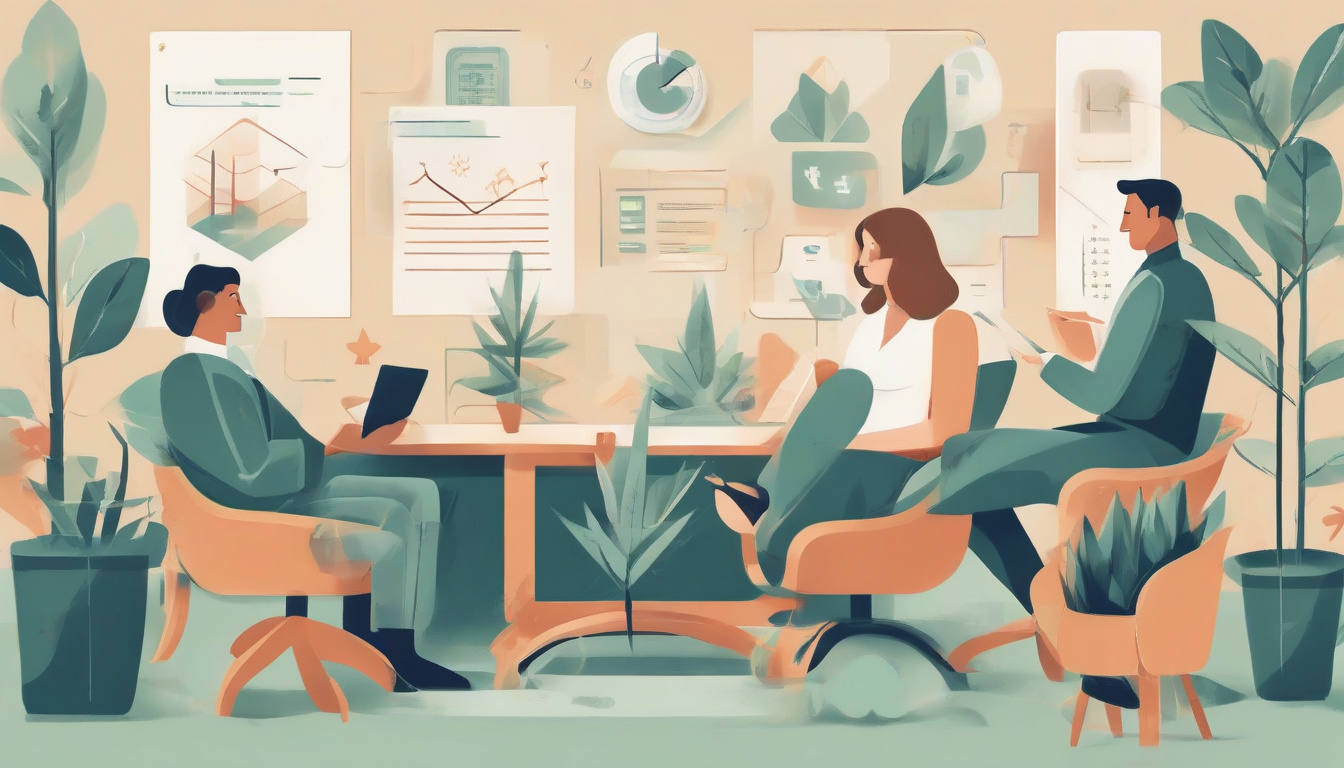Unlocking Financial Freedom: Your Ultimate Guide to Credit Relief Solutions
In today’s fast-paced financial landscape, many individuals find themselves overwhelmed by debt and seeking a way out. This is where credit relief solutions come into play, offering a beacon of hope for those struggling to manage their financial obligations. In this comprehensive guide, we will unlock the secrets of credit relief, exploring what it is, the various solutions available, and how you can assess your situation to make the best decisions moving forward. From debt settlement to credit counseling, understanding the types of credit relief will empower you to take control of your finances. We’ll also cover the essential steps for accessing these relief options and how to maintain your financial health after securing relief solutions. By the end of this article, you will have a solid foundation to navigate your financial journey towards freedom.

Key Takeaways
- Credit relief encompasses a variety of strategies designed to help individuals manage or reduce their debt.
- There are multiple types of credit relief solutions, including consolidation, settlement, and counseling services.
- Assessing your financial situation is crucial to determine the right time and type of credit relief to pursue.
- Accessing credit relief involves specific steps that can vary based on the chosen solution.
- Post-relief financial health requires ongoing management and strategies to avoid future debt issues.
Understanding Credit Relief: What It Is and How It Works
Understanding credit relief is crucial for anyone facing financial challenges. Credit relief refers to various programs and measures designed to help individuals and businesses manage and reduce their debt obligations. There are several types of credit relief options available, each catering to different financial situations. One common form is debt settlement, where a creditor agrees to accept a lower amount than the full debt owed, typically achieved through negotiation by a debt relief company. Another option is credit counseling, where professionals offer strategies to manage debts more effectively and potentially lower interest rates. Bankruptcy is also a form of credit relief, providing a legal framework to eliminate debts, but it can significantly impact one’s credit score and take years to recover from. Understanding these options allows individuals to assess which path may provide the most relief based on their financial situation.
Types of Credit Relief Solutions Available
## Types of Credit Relief Solutions Available
When navigating the challenging terrain of debt management, it’s crucial to understand the various credit relief solutions available to individuals and businesses alike. Each option caters to different financial situations and can significantly impact one’s credit standing and financial future. Here are some primary types of credit relief solutions:
###
1. Debt Consolidation
Debt consolidation involves combining multiple debts into one single payment, often with a lower interest rate. This can be achieved through a personal loan or a balance transfer credit card. This approach not only simplifies repayment by reducing the number of payments but can also lower monthly payments, making it more manageable to pay off debt over time.
###
2. Credit Counseling
Credit counseling services offer professional guidance on managing debt. Certified credit counselors assess an individual’s financial situation and provide tailored advice. Many organizations also offer debt management programs (DMPs), where they negotiate with creditors on behalf of the client for lower interest rates and better repayment terms.
###
3. Debt Settlement
Debt settlement is a negotiated agreement with creditors to pay less than the total amount owed. Typically, consumers work with a debt settlement company to help negotiate these terms. While this can lead to significant savings, it can also negatively impact credit scores and may have tax implications on forgiven debts.
###
4. Bankruptcy
Declaring bankruptcy is often considered a last resort for credit relief. It provides a legal framework for individuals or businesses to eliminate or reorganize debts under court supervision. Chapter 7 bankruptcy discharges most unsecured debts, while Chapter 13 allows for repayment plans over several years. However, bankruptcy can have long-lasting effects on credit scores and should be carefully considered.
###
5. Government Programs
Various government programs exist to assist individuals facing financial hardships, such as income-based repayment plans for federal student loans or loan forgiveness programs. These programs often require specific qualifications but can provide substantial relief for those eligible.
###
6. Credit Card Hardship Programs
Many credit card issuers offer hardship programs that allow cardholders facing financial difficulties to temporarily lower or defer payments. These programs can include reduced interest rates and waived fees, making it easier for consumers to manage their credit obligations during tough times.
###
7. Financial Education and Workshops
Participating in financial education workshops can also serve as a form of credit relief. Understanding personal finance, budgeting, and effective debt management strategies can empower individuals to regain control of their financial health and avoid future debt troubles.
In conclusion, while each of these credit relief options has its pros and cons, understanding the right solution tailored to your financial situation is essential for achieving long-term financial stability. Analyze your circumstances, consult with financial professionals, and take proactive steps towards relief and recovery.
‘The process of credit relief is not simply a matter of fixing the numbers; it is about liberating yourself from the constraints that hold you back. Financial freedom starts with understanding and action.’ – Unknown

Evaluating Your Financial Situation: When to Consider Credit Relief
When faced with overwhelming debt and financial challenges, evaluating your financial situation is a critical first step before considering options such as credit relief. Begin by assessing your total income versus your monthly expenses. Create a detailed budget to identify areas where you can cut back, and pinpoint the debts that are putting the most pressure on your finances. If, after making these adjustments, you find that you’re still struggling to keep up with minimum payments or falling further behind, it’s a clear signal that you should explore credit relief options.
Some indicators that you should consider seeking credit relief include repeated late payments, threatening calls from creditors, or just a general feeling of being overwhelmed by your financial obligations. It’s important to address these issues early on, as they can escalate and lead to more severe consequences like collections or damaging your credit score. Assess whether your financial struggles are temporary due to unforeseen circumstances, like medical emergencies or job loss, or if they stem from long-term poor spending habits. Depending on the severity of your situation, options such as credit counseling, debt management plans, or even bankruptcy might be necessary. Remember, reaching out for help is a sign of strength, not weakness; understanding where you stand can empower you to take action toward reclaiming your financial stability.
Steps to Accessing Credit Relief: A Comprehensive Guide
## Steps to Accessing Credit Relief: A Comprehensive Guide
Accessing credit relief can seem like a daunting process, especially with the variety of options available and the complexities of financial terms. However, by following these structured steps, you can simplify the process and make informed decisions about your financial future.
### Step 1: Understand Your Financial Position
Before you can access credit relief, it’s essential to have a clear understanding of your current financial situation. This involves:
• Reviewing your credit report: Obtain a copy of your credit report from major credit bureaus and check for errors or discrepancies.
• Analyzing your debts: Make a list of all your debts, including outstanding balances, interest rates, and minimum payments.
This will provide you with a comprehensive view of your liabilities and help you prioritize which debts to address first.
### Step 2: Research Credit Relief Options
There are several types of credit relief programs available:
• Credit Counseling: Nonprofit agencies can offer guidance on managing debts and negotiating with creditors.
• Debt Settlement: This approach involves negotiating with creditors to settle debts for less than the full amount.
• Debt Management Plans: These plans consolidate debts into a single monthly payment, often at a lower interest rate.
Make sure to compare these options, looking for their pros and cons, and find the one that closely fits your needs.
### Step 3: Gather Necessary Documentation
To apply for any credit relief program, you’ll need to provide several documents:
• Identification: Government-issued ID to verify your identity.
• Income Statements: Pay stubs, tax returns, or any other proof of income.
• Financial Information: Statements detailing assets, debts, and monthly expenses.
Having these documents ready will streamline the application process.
### Step 4: Select a Reputable Service Provider
If you choose to work with a credit relief agency, it’s critical to select a reputable provider. Look for:
• Accreditation: Verify that the service organization is accredited by recognized bodies like the National Foundation for Credit Counseling (NFCC).
• Testimonials: Check reviews and feedback from previous clients.
• Transparency: Ensure they are upfront about their fees and processes.
### Step 5: Begin the Application Process
Once you’ve selected a program and agency, start the application process. Here’s what to keep in mind:
• Stay Honest: Provide accurate information to avoid legal complications or issues with your application.
• Communicate Openly: If accepted into a program, maintain regular communication with your counsel to ensure that you are on track.
### Step 6: Follow Through with Your Relief Plan
Implementing the relief plan could involve:
• Regular payments: Adhere to the payment schedule laid out by your plan or agency.
• Budgeting: Track your spending carefully to avoid falling back into debt.
• Education: Take advantage of educational resources offered by your service provider to improve your financial literacy.
Following these steps diligently will not only help you obtain credit relief but also empower you to maintain a healthier financial future.

Maintaining Financial Health After Credit Relief Solutions
Maintaining financial health after utilizing credit relief solutions requires a strategic approach to budgeting, managing debts, and fostering good financial habits. Once individuals or households have taken advantage of credit relief options to reduce their debt burden, the journey towards financial stability doesn’t end; rather, it marks the beginning of a new chapter in personal finance management. It is crucial to stay proactive in monitoring expenditures and income levels. Establishing a detailed budget can help track spending patterns and identify areas where savings can be made. Additionally, it’s essential to rebuild credit by paying down remaining debts on time and avoiding further reliance on credit cards. Investing in financial education can equip individuals with the knowledge necessary to make informed decisions, ultimately guiding them towards sustainable financial practices. Regularly reviewing financial goals and adjusting them as necessary can also contribute to long-term financial stability. These steps, when consistently applied, pave the way for a healthier financial future after experiencing the pressures of debt.
Frequently Asked Questions
What is credit relief?
Credit relief refers to various financial strategies aimed at helping individuals manage and reduce their debt. It can include options like debt consolidation, credit counseling, or negotiation of settlements with creditors.
What types of credit relief solutions are available?
There are several types of credit relief solutions, including debt management plans, debt settlement, bankruptcy, and credit counseling services, among others.
How can I determine if I need credit relief?
You should consider credit relief if you’re struggling to make monthly payments, facing creditor harassment, or if your debt-to-income ratio is too high. Evaluating your financial situation and creating a budget can help assess the need for credit relief.
What steps do I need to take to access credit relief solutions?
To access credit relief solutions, start by evaluating your financial situation, identifying your debts, and researching available options. You may also want to consult with a financial advisor or credit counselor to guide you through the process.
How can I maintain financial health after utilizing credit relief solutions?
To maintain financial health post-credit relief, create and stick to a budget, build an emergency fund, avoid accumulating new debt, and monitor your credit report regularly.
